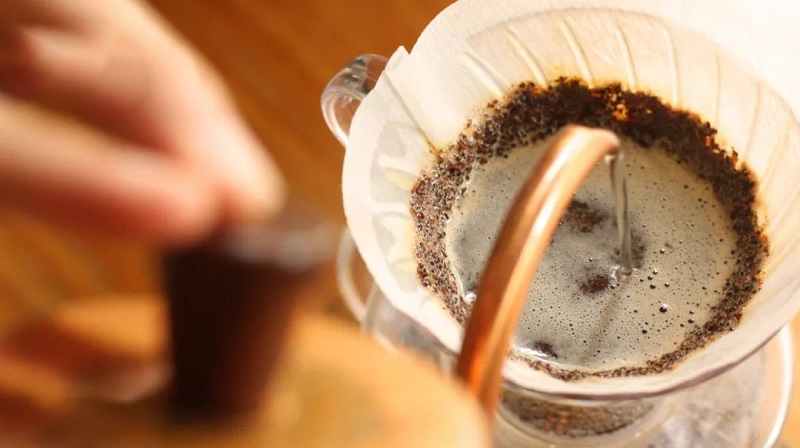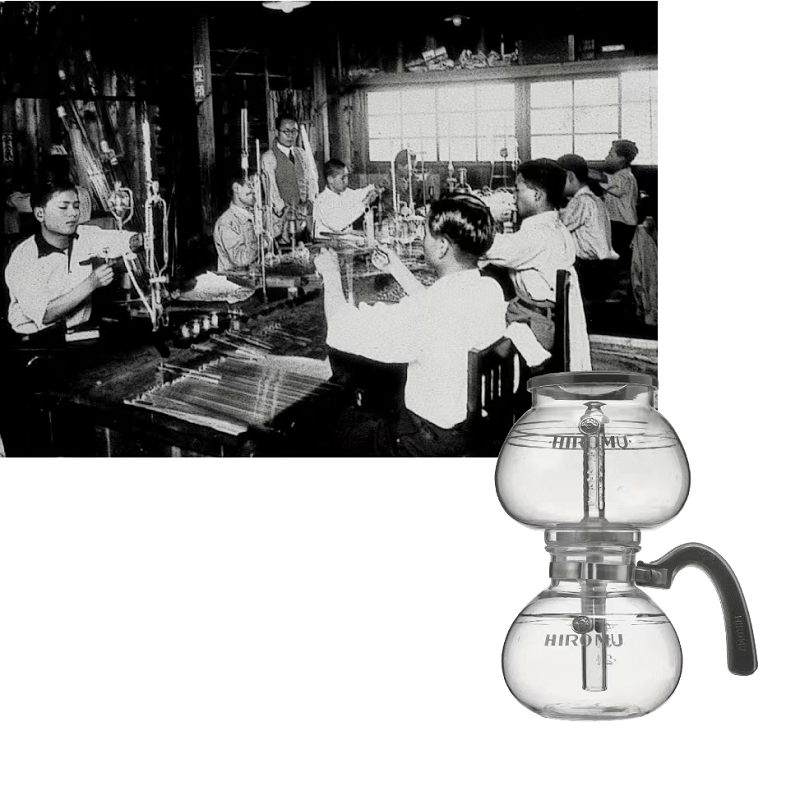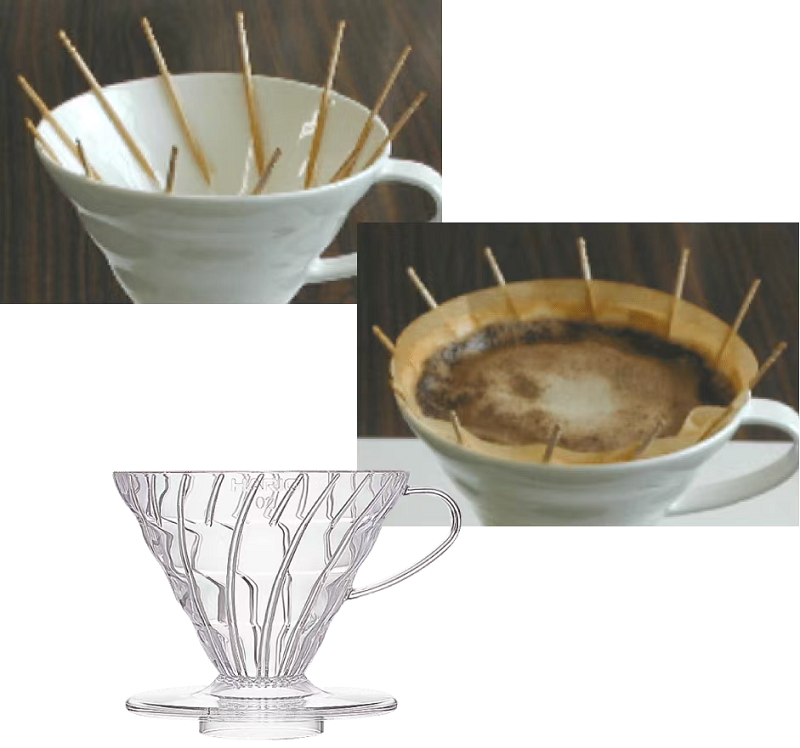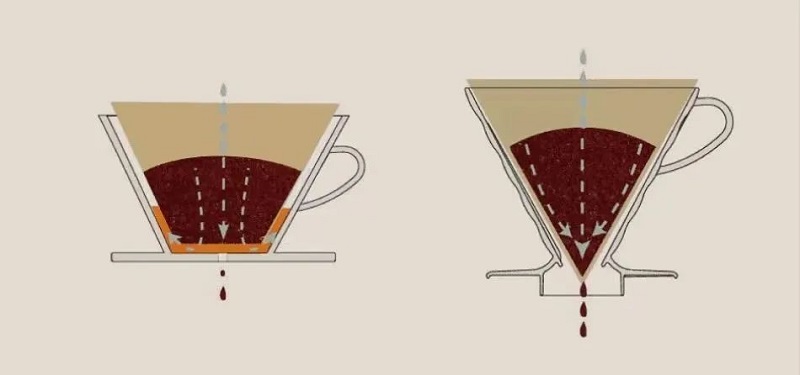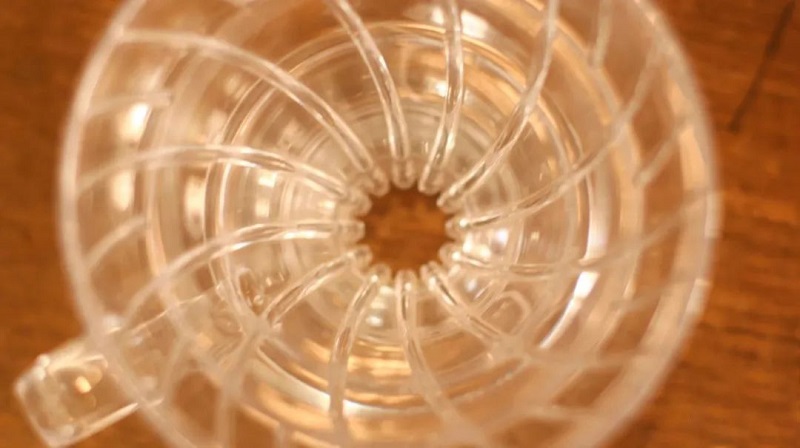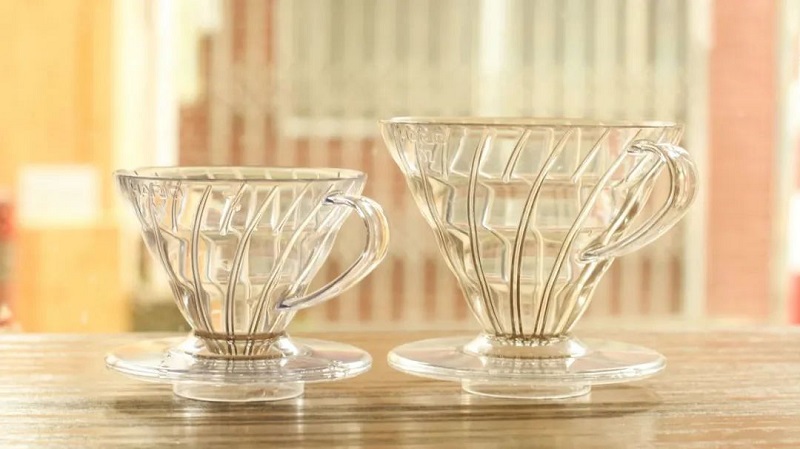If you are a beginner in hand brewing coffee and ask an experienced expert to recommend a practical, easy-to-use, and visually appealing hand brewing filter cup, there is a high chance that they will recommend you to buy the V60.
V60, A civilian filter cup that everyone has used, it can be said to be one of the essential tools for every hand punch player. As a regular customer of the store’s products, coffee shops have to use them at least a thousand times a year, so they can also be considered as “experienced users” of V60. So, even though there are so many styles of filter cups on the market, why has V60 become the “heartthrob” of the hand brewed coffee industry?
Who invented V60?
Hario, the company that designed V60 filter cups, was founded in Tokyo, Japan in 1921. It is a well-known glass product manufacturer in the area, initially dedicated to designing and producing heat-resistant glass instruments and equipment for scientific research institutions. The heat-resistant glass sharing pot, which is often paired with hand brewed coffee, is a popular product under Hario.
In the 1940s and 1950s, Hario Company officially entered the field of household appliances, and the siphon pot was their first coffee extraction equipment. At that time, slow infusion was the mainstream extraction form in the coffee market, such as Melitta filter cups, flannel filters, siphon pots, etc. Either the aperture was too small, or the brewing steps were too complicated and the time was generally too long. So Hario company hopes to create a brewing filter that is easy to operate and has a faster flow rate.
In 1964, Hario’s designers began attempting to extract coffee using laboratory funnels, but they were not used for commercial purposes and there are few records of their use. In the 1980s, Hario Company introduced a filter paper drip filter (similar in appearance to Chemex, with a funnel-shaped filter connected to the lower container) and began production in 1980.
In 2004, Hario redesigned the prototype of V60, making the shape of this filter closer to what we are familiar with today, and named it after its unique 60 ° cone angle and “V” shape. It was officially launched for sale a year later. On the HARIO official website, we can find the prototype of the filter cup: a conical ceramic filter cup with 12 toothpicks neatly adhered to the inner wall, used to simulate drainage grooves.
The extraction method of V60 filter cup
1.Compared with other filter cups, the conical design with a 60 ° angle ensures that when using V60 for brewing, the water flow must reach the center before dripping into the lower pot, extending the contact area between water and coffee powder, allowing the aroma and taste to be fully extracted.
2. Its iconic single large aperture allows water flow to be unobstructed, and the liquid flow rate largely depends on the brewer’s flow control ability, which is directly reflected in the coffee flavor. If you have a habit of pouring water too much or too quickly, and the delicious substances have not yet been released from the coffee before the extraction is over, then the coffee you brew is likely to have a thin and bland taste. Therefore, in order to brew coffee with good flavor and high sweetness using V60, it is indeed necessary to practice and adjust the water injection technique more in order to better express the sweet and sour balance of coffee.
3.On the side wall, there are multiple raised ribs with spiral patterns, varying in length, running through the entire filter cup. Firstly, it can prevent the filter paper from tightly adhering to the filter cup, creating enough space for air circulation and maximizing the water absorption and expansion of coffee particles; Secondly, the design of the spiral convex groove also allows the downward water flow to compress the powder layer, creating a richer sense of layering, while also extending the flow path of the water flow to avoid insufficient extraction caused by large pore size.
What made people start paying attention to V60 filter cups?
Before 2000, the coffee market was dominated by medium to deep roasting as the main roasting direction, and the flavor direction of coffee brewing also advocated for expressions such as richness, body fat, high sweetness, and aftertaste, as well as caramelized flavors derived from deep roasting, such as chocolate, maple syrup, nuts, vanilla, etc. With the arrival of the third wave of coffee, people began to pursue regional flavors, such as the white floral aroma of Ethiopia and the berry fruit acid of Kenya. Coffee roasting began to shift from deep to light, and flavor tasting also shifted from mellow and sweet to delicate and sour.
Before the emergence of V60, the slow extraction method that tended to soak coffee resulted in a rounded, thick, balanced, and sweet overall flavor. However, it was difficult to fully utilize the floral and fruity aroma, light acidity, and other flavors of some lightly roasted beans. For example, the extraction of Melitta, KONO and other slow filter cups focuses on the rich flavor tone. The rapid extraction feature of V60 precisely allows coffee to obtain a more three-dimensional aroma and acidity, thereby presenting certain delicate flavors.
Which material is better for making coffee with V60?
Nowadays, there are various materials of V60 filter cups on the market. In addition to my favorite resin material, there are also ceramic, glass, red copper, stainless steel and other versions. Each material not only affects the appearance and weight of the filter cup, but also creates subtle differences in thermal conductivity during boiling, but the structural design remains unchanged.
The reason why I “exclusively love” the resin version of Hario V60 is firstly because the resin material can effectively block heat loss. Secondly, in standard industrial mass production, resin material is the best shaping and least error prone product. Besides, who wouldn’t like a filter cup that’s not easily broken, right?
Post time: Aug-27-2024






